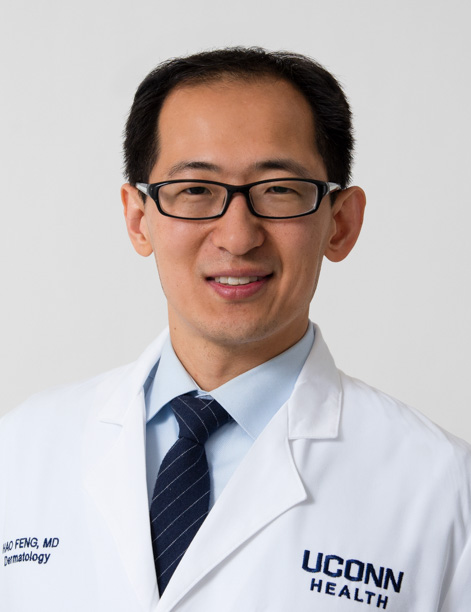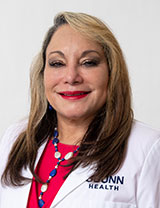Mohs Surgery
Mohs surgery has become the gold standard for the treatment of basal cell carcinomas (the most common form of skin cancer) that are difficult to treat due to where they are located on the body. This surgical technique allows doctors to remove the tumor while minimizing the loss of healthy surrounding tissue and subsequent deformities.
In the Mohs procedure rooms, patients undergo tissue-sparing treatment for basal cell carcinomas and other non-melanoma cutaneous malignancies. Patients are referred for Mohs surgery from around the state and benefit from the department's long-standing dedication to and experience with this cutting-edge technique.
Meet Our Team

Hao Feng, MD, MHS, FAAD
Farmington
Accepting New Patients

Maritza I. Perez, MD, FAAD
Farmington
Accepting New Patients
Common Questions About Mohs Surgery
Mohs surgery was developed in the 1930's by Dr. Frederick Mohs, and a vital part of his innovation was the development of a color-coding technique used to map and orient the excised tissue. Although the procedure has been refined over the last several decades, the heart of Mohs is this mapping process.
Simply put, the Mohs procedure is the removal of skin cancer in stages. During the first stage, the surgeon removes only the visible tumor in order to minimize the loss of normal tissue. The area is numbed with local anesthetic. Patients may feel some pressure while the surgeon removes the tumor which only take a few minutes. A gauze bandage is placed on the wound and patients and their guests are escorted to a private waiting room with a TV, refreshments, and snacks.
While patients are waiting, the surgeon prepares the tissue for an examination by a histotechnolgist who determines if any of the tumor remains and if so, the exact location. The process can take an hour or more. If some of the tumor remains, the surgeon removes more tissue from the identified area, and the process continues until the removed tissue is free of tumor cells.
By treating the tumor in this way, the microscopic roots are made visible and can be removed in a conservative manner, preserving as much normal tissue as possible. The surgeon then determines the best options for repairing the wound.
Call to Make an Appointment
860-679-4600
